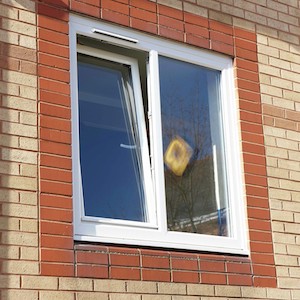A Window in the Door: More than Just a Pane of Glass

At first glimpse, a window in a door may seem like a basic architectural feature. It's just a piece of glass that allows light to filter through or offers a look of what's on the opposite, right? But when you stop briefly to believe about it, this relatively mundane aspect carries significant practical, aesthetic, and even symbolic weight. Whether it enhances the doors of your home, office, or favorite café, a window in a door is even more than just a pane of glass-- it's a bridge between spaces.
1. Performance: The Practical Role of Door Windows
The addition of a window to a door offers useful benefits that can enhance both residential and business areas:
Natural Light: One of the main functions of a window in a door is to permit sunshine to go through. In spaces with minimal windows or confined locations like corridors or interior workplaces, this function can lighten up the area, minimize the reliance on synthetic lighting, and produce a more welcoming environment.
Exposure and Safety: A window in a door supplies a clear line of vision for those on either side. This is especially crucial in industrial and industrial settings, such as restaurants, factories, or schools, where people often move through doors. Exposure lowers the threat of mishaps (e.g., someone walking into a door or colliding with someone on the other side).
Ventilation and Energy Efficiency: When coupled with operable glass or modern technologies like double-glazing and low-E glass, door windows can add to much better air blood circulation and energy efficiency in your home or workspace.
Security: While breaking glass might look like an open invitation to robbers, modern styles have addressed this problem. Reinforced glass, tempered glass, or designs with narrow panes can make the window resistant to forced entry while still serving the purposes of exposure and light.
2. Visual Appeal: Enhancing the Visual Identity of a Space
From a design perspective, windows in doors can elevate visual appeal in many methods:
Style and Character: The design of the window typically matches the architectural ambiance of the property. A home with a rustic or farmhouse appearance might include a door with frosted or stained glass, while a streamlined, contemporary home may display a minimalist door with simple, tidy lines.
Personalization: Door windows are available in various shapes and sizes-- round, rectangular, oval, arched, or custom-made to match your choices. This versatility gives homeowners and architects the ability to create doors with creative flair and personal touches.
Suppress Appeal: The entry door is frequently the centerpiece of a home's exterior, and a well-designed window within it can turn an otherwise common door into a strong design statement. Frosted or etched glass, for example, can communicate sophistication and sophistication.
3. Symbolism and Meaning: Beyond the Practical and Aesthetic
On a deeper level, a window in a door brings symbolic meanings that resonate across cultures and contexts:
Openness and Connection: A door with a window promotes a sense of connection between two discrete areas. Whether it's between a house and its front backyard or a workplace conference room and a corridor, the window can make these areas feel less isolated and more integrated.
Openness: In work environments, doors with windows signify openness and accountability. A supervisor's office with a glass-panel door, for example, can indicate approachability, decreasing the hierarchical barrier that a solid closed door may create.
A Threshold of Opportunity: Metaphorically speaking, a door with a window can represent a view into new opportunities. It provides a preview into what lies ahead-- a fitting image for individual development and exploration.
4. Modern Trends: Innovations in Door Window Design
Advances in innovation and style are continuously reshaping how we believe about door windows. Here are a few patterns to see:
Smart Glass: With the advent of smart technology, windows that can alter from transparent to opaque with the touch of a button are gaining popularity. These modern choices use personal privacy on demand without compromising the advantages of natural light.
Energy Efficiency: Double- and triple-glazed door windows with advanced insulation are becoming standard in energy-conscious homes. These not only keep your energy costs in check but likewise decrease ecological effect.
Decorative Enhancements: Patterns, etching, and colored glass inserts are becoming more detailed, providing property owners limitless possibilities to customize their doors.
Security Upgrades: Impact-resistant glass and shatter-proof movies are progressively being incorporated into door windows, particularly in locations prone to storms or high-security needs.
5. Factors to consider for Choosing a Door with a Window
Before picking a door with an integrated window, there are a couple of elements house owners and designers ought to remember:
Privacy: While a window supplies visibility and natural light, it can likewise compromise personal privacy. Frosted glass or strategically positioned window styles can mitigate this concern.
Upkeep: Glass in doors will collect fingerprints, dirt, and spots, specifically in high-traffic locations. Choosing materials that are simple to clean or have protective finishes can save time.
Integration with the Environment: Choose a door window design that complements the surroundings. A door in a peaceful, domestic area may prioritize looks, while one in a commercial structure might stress resilience and safety.
Conclusion: A Small Feature with Significant Impact
As simple as it might seem, a window in a door is a feature that blends usefulness with beauty, security with style, and connection with individuality. It's a reminder that the smallest information in architecture can have the power to transform not only our areas however likewise the method we engage with them.
Whether you're peering through a glass panel to invite a visitor or letting natural light filter into your home, a window in a door is a lot more than a style aspect-- it's a method to open ourselves to the world, one pane of glass at a time.
